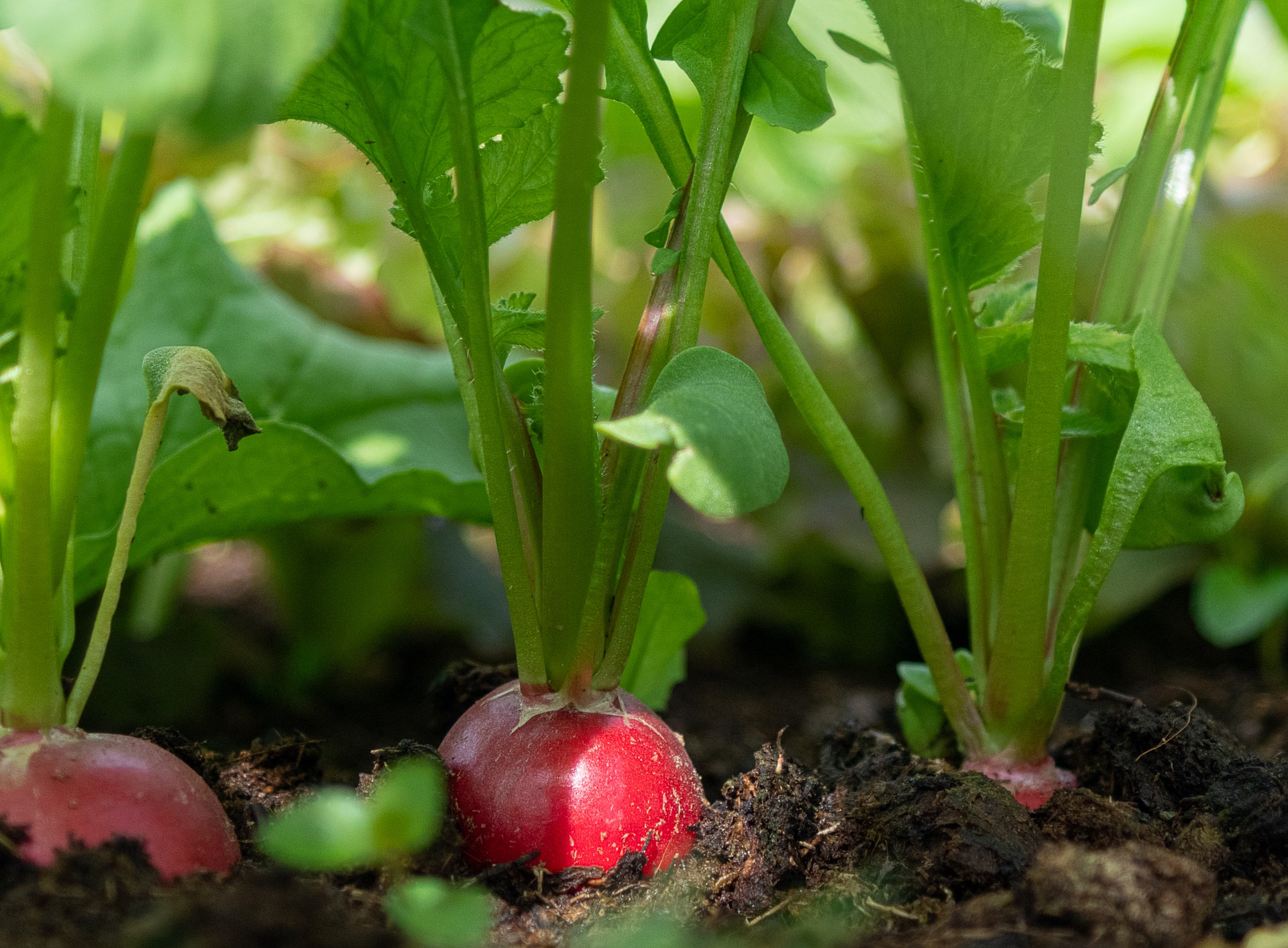
Sowing Red Radish: Cultivation, Care & Harvesting
Red radishes are very popular and versatile due to their short cultivation period. They are often grown as an intermediate crop or gap filler. This undemanding crop is also ideal for growing on the balcony. If sown regularly from March, you can harvest fresh radishes right into the fall. You can find out what you need to know about sowing, caring for and harvesting red radishes here.
This Article Contains:
- Sowing and Planting Red Radishes: What You Need to Know
- Radish Varieties: Discover a Broad Variety
- When to Sow Red Radishes?
- German Radishes in Mixed Cultivation: Companion Plants
- Your Planting Plan With Garden Radish
- Planting Radishes on the Balcony
- Caring for Garden Radishes Properly
- Diseases & Pests of Radishes
- Harvesting Radishes
- Storing Radishes
- Obtaining Radish Seeds: Here’s How
- Frequently Asked Questions About Sowing Radishes
Quick Overview
Garden Radish: How Sowing Works
- Light requirement: medium
- Nutrient requirement: low
- Water requirement: moist
- Soil: loose, humus-rich soil
- Germination temperature: 6 - 15 °C/43 - 59 °F
- Sowing: direct sowing from the beginning of March to the beginning of September
- Planting depth: 1 cm/0.4 in
- Planting distance: 3 - 4 cm/1.2 - 1.6 in
- Row spacing: 10 - 15 cm/4 - 6 in
Sowing and Planting Red Radishes: What You Need to Know
The red radish or also known as german radish, garden radish or common radish (Raphanus sativus var. sativus) is part of the cruciferous family (Brassicaceae) . They are closely related to radishes (Raphanus) and are very similar in taste. Garden radishes are probably native to Asia.
Location & Soil
Red radishes are an uncomplicated crop that thrives in almost all garden soils. However, the tubers develop best in loose, humus-rich soil . Beds with heavy soil should be loosened before sowing so that the tubers can grow unhindered. Light soils are prepared with mature compost so that the water does not seep away too quickly. Radishes prefer evenly moist soil. The location should be sunny to semi-shady . In midsummer in particular, it is better to choose a semi-shaded location, as the plants will otherwise start to bolt. Shooting is when a radish grows upwards and forms flowers. In this case, the tuber becomes inedible.
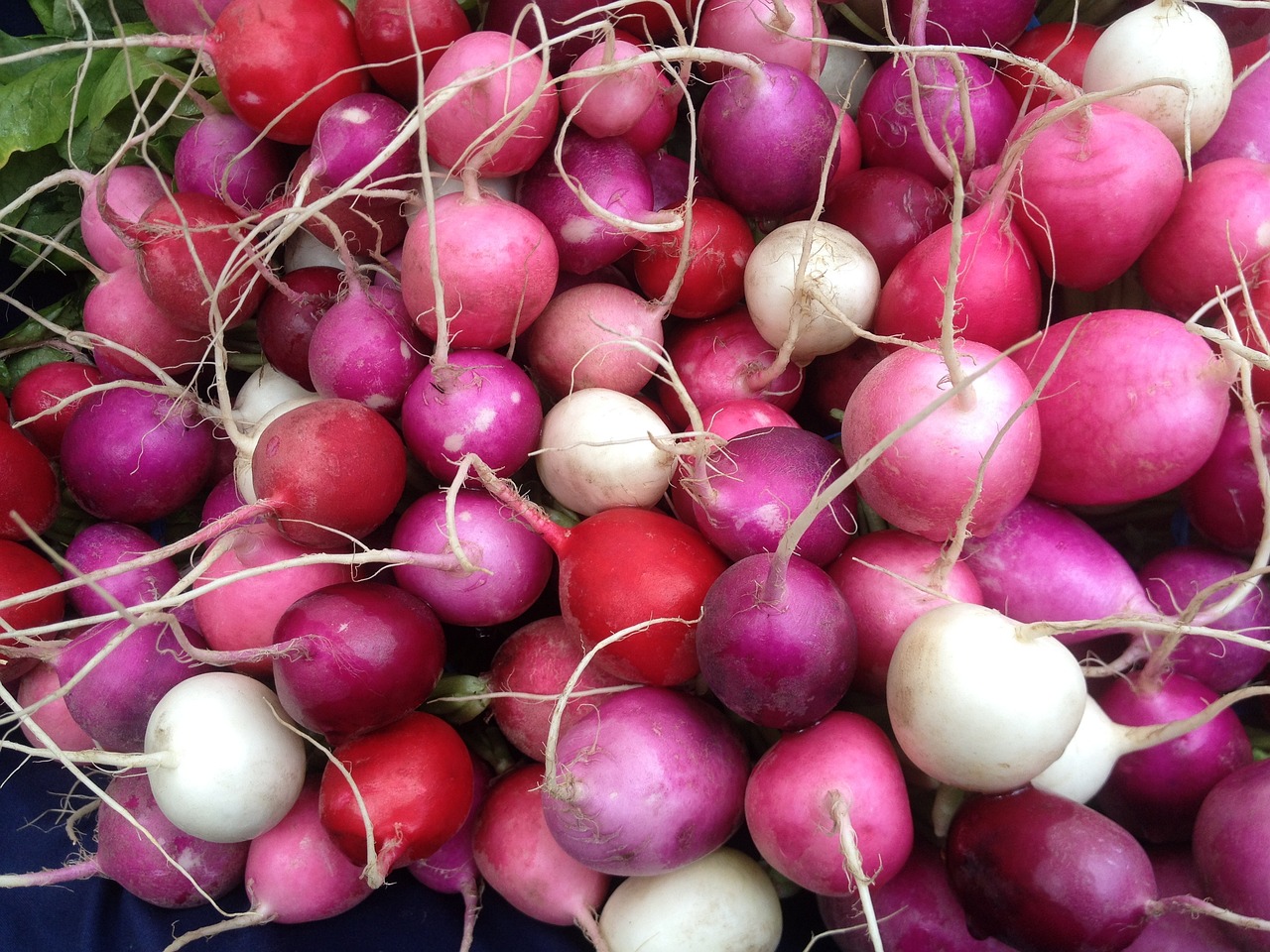
Radish Varieties: Discover a Broad Variety
The variety now ranges from spherical to flat-round and elongated shapes in red, white, purple or yellow. Depending on the variety, radishes differ in their appearance and taste, but also in the best time to grow them.
Radishes are a big hit all year round, but you should always make sure you choose the right variety. Many varieties start to sprout and then flower if the temperature is too high. This is only desirable if you want to produce your own seeds. Most varieties have now been bred to be bolt-resistant. This means that the plants flower late or not at all. This is particularly advantageous for summer cultivation from May onwards. Varieties that are suitable for year-round cultivation include Sora, Topsi, French Breakfast and Eiszapfen.

Discover Numerous Varieties!
In our library you will find information on the individual radish varieties with cultivation periods, tips on planting and harvesting. You will also find good and bad neighbours to help you plan a mixed crop.
Discover Library NowWhen to Sow Red Radishes?
Red radishes are one of the first crops to open the gardening season. They can be sown directly outdoors from February/March until the beginning of September, or even as early as February if you have a greenhouse. Plant the seeds about 1 cm deep in the soil, 3 to 4 cm/1.2 to 1.6 in apart. Choose a distance of 10 to 15 cm/4 to 6 in between the rows. The seeds should not be sown deeper, otherwise they will form an elongated, woody tuber. You can make seed tapes for sowing radishes. You can find out How to Make Your Own Seed Tapes in this article.
If you sow regularly, you can harvest your own fresh radishes right into the fall. In regions with late frosts, it is worth protecting the radishes with a fleece. It is also advisable to protect the seeds from birds until germination. Especially in early spring, the food supply is scarce and the local birds like to help themselves. The seeds should now germinate within a few days to a week with sufficient water. Depending on the variety, germination temperatures are between 6 - 15 °C/43 - 59 °F. As red radishes are cold germinators, germination is delayed at warmer soil temperatures. In midsummer, it can therefore be helpful to put the seeds in the fridge for about a week before sowing them.
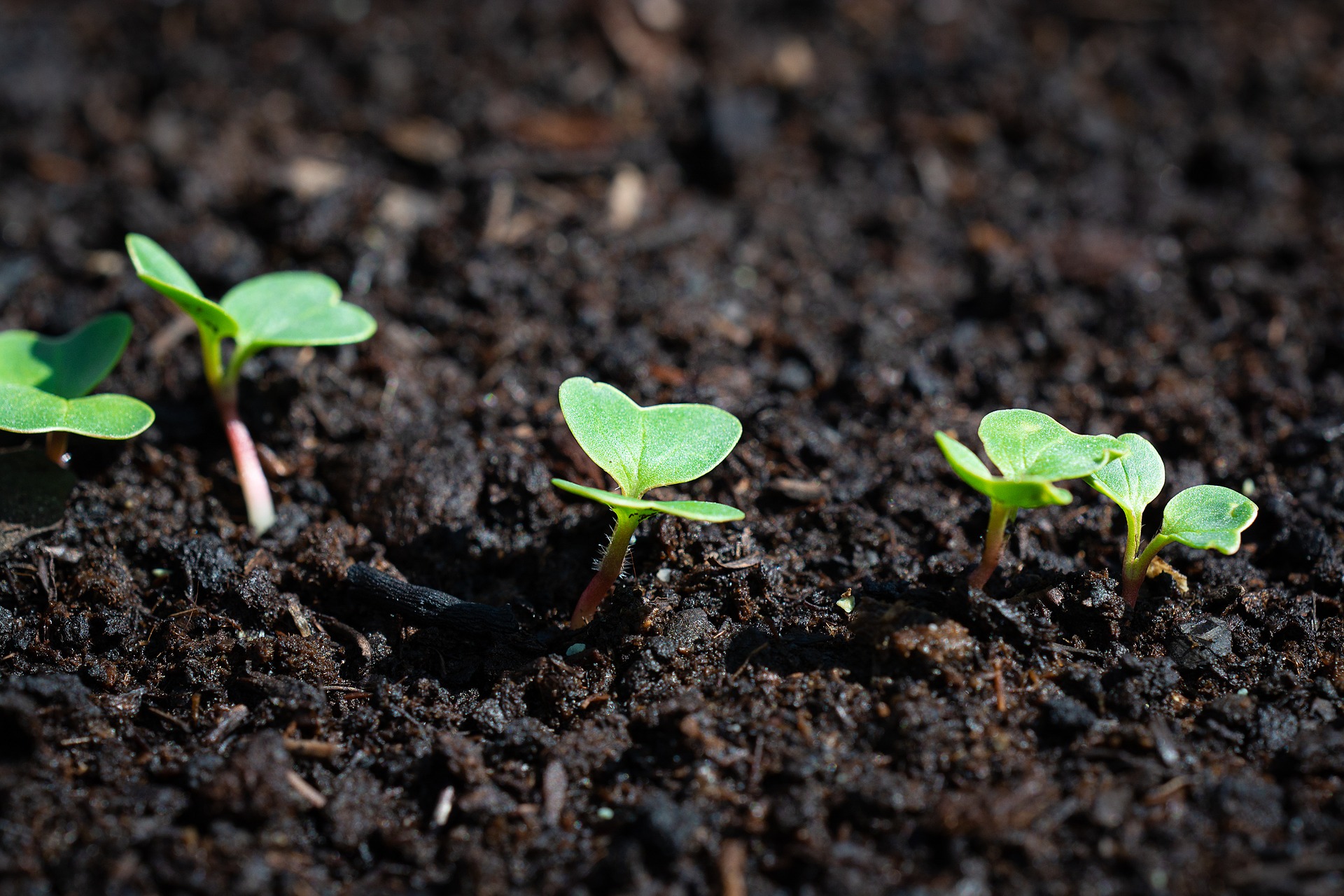
German Radishes in Mixed Cultivation: Companion Plants
Radishes have a particularly short cultivation period. Depending on the variety and time of year, it takes 4 to 8 weeks from sowing to harvest. For this reason, they can be used in a variety of ways. They are well suited as a pre-crop or post-crop and as an intercrop, but they can also be cultivated individually in pots. They are also often used as marker seeds to mark rows of slow-growing crops.
Table: Companion Plants for Red Radishes
| Good Companion Plants | Bad Companion Plants | |
|---|---|---|
| beans | pak choi | arugula |
| broccoli and cauliflower | parsnip | celeriac |
| cabbage | peas | chervil |
| carrots | purslane | cucumbers |
| chard | romanesco | horseradish |
| chicory and chinese cabbage | salsify | leeks |
| cress | savory cabbage | lovage |
| kale | spinach | onions |
| kohlrabi | strawberries | radicchio |
| lavender | tomatoes | scallions |
| lettuce | turnip cabbage | turnip |
| mint | zucchini |
You can read more about Mixed Cultivation With Cabbage here. As the red radish is not a heavy feeder like most cabbage plants, it is ideal for mixed cultivation with many plants.
Crop Rotation With Red Radishes
Plants of the cruciferous family (Brassicaceae), including radishes, daikon, horseradish and various types of cabbage, should not be grown several times in succession in the same bed due to Crop Rotation. Give your bed a break of 3 years, otherwise you risk diseases. Crop Rotation with peas, beans, lettuce or spinach would be better.
Your Planting Plan With Garden Radish
Radishes are a great gap filler and are also ideal as a starter crop. Here you can find some bed plans as an example of mixed cultivation with radishes. Have fun discovering them!
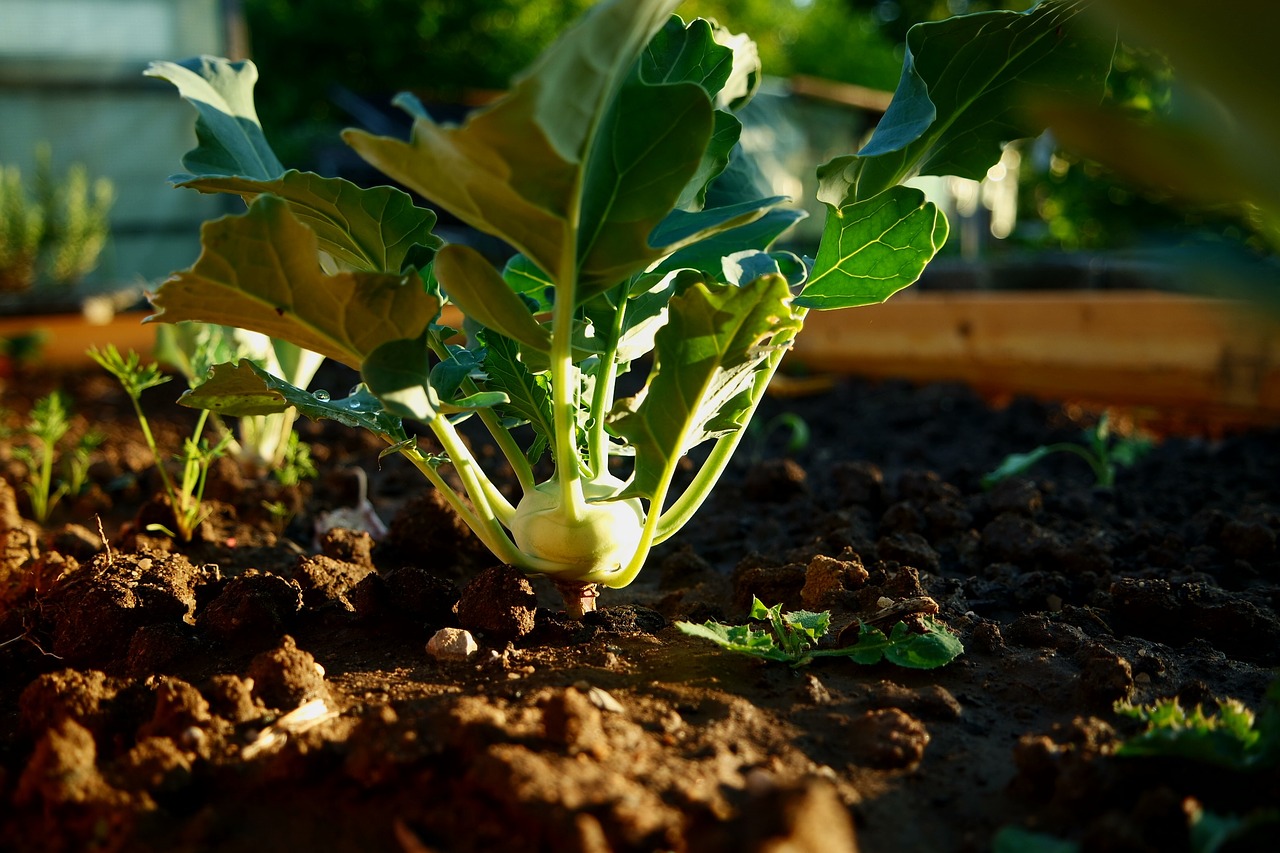
Planting Radishes on the Balcony
Radishes are perfect for growing in a pot or window box. Make sure there is enough space between the rows and plants so that the tubers can grow and thrive. The water must also be able to drain well, as radishes do not like waterlogging. After 4 to 8 weeks and daily watering, you can harvest your first radishes. You can find More Ideas and Inspiration for Your Balcony Garden in this article.
Caring for Garden Radishes Properly
- Especially at the beginning, you should ensure a sufficient and even water supply. If there is a lack of water or strong fluctuations, the tubers will become furry or may burst. Dryness also has a negative effect on the taste.
- Radishes are light feeders and therefore do not need to be fertilized. An excess of nutrients will only make the plant more susceptible to diseases and pests. It also reacts with excessive leaf growth and too little tuber growth.
Diseases & Pests of Radishes
Due to their rapid growth, radishes are spared from many pests and diseases or harvested before larvae, viruses or germs develop. However, as part of the Brassicaceae family, radishes are on the menu of the cabbage fly and the cabbage whitefly. Slugs and snails also like the radish's tender cotyledons. A net helps to protect the plants. Earth fleas are also attracted to the seedlings, but can be kept away by watering evenly or using a layer of mulch. You can find out How to Prevent and Control Plant Pests Such as Cabbage White Butterflies and Slugs in this article.
Harvesting Radishes
A radish is ready to harvest when it is 2 to 3 cm/0.8 to 1.2 in in diameter and can then be carefully pulled out of the soil.
When to Harvest Radishes?
As already mentioned, radishes only need 4 to 8 weeks to ripen. However, this only applies to long-day conditions, i.e. from March to September. In the fall, the days become shorter again. It can then take up to ten weeks before the radishes are ready to harvest. Don't wait too long to harvest, as some varieties then become furry or woody.
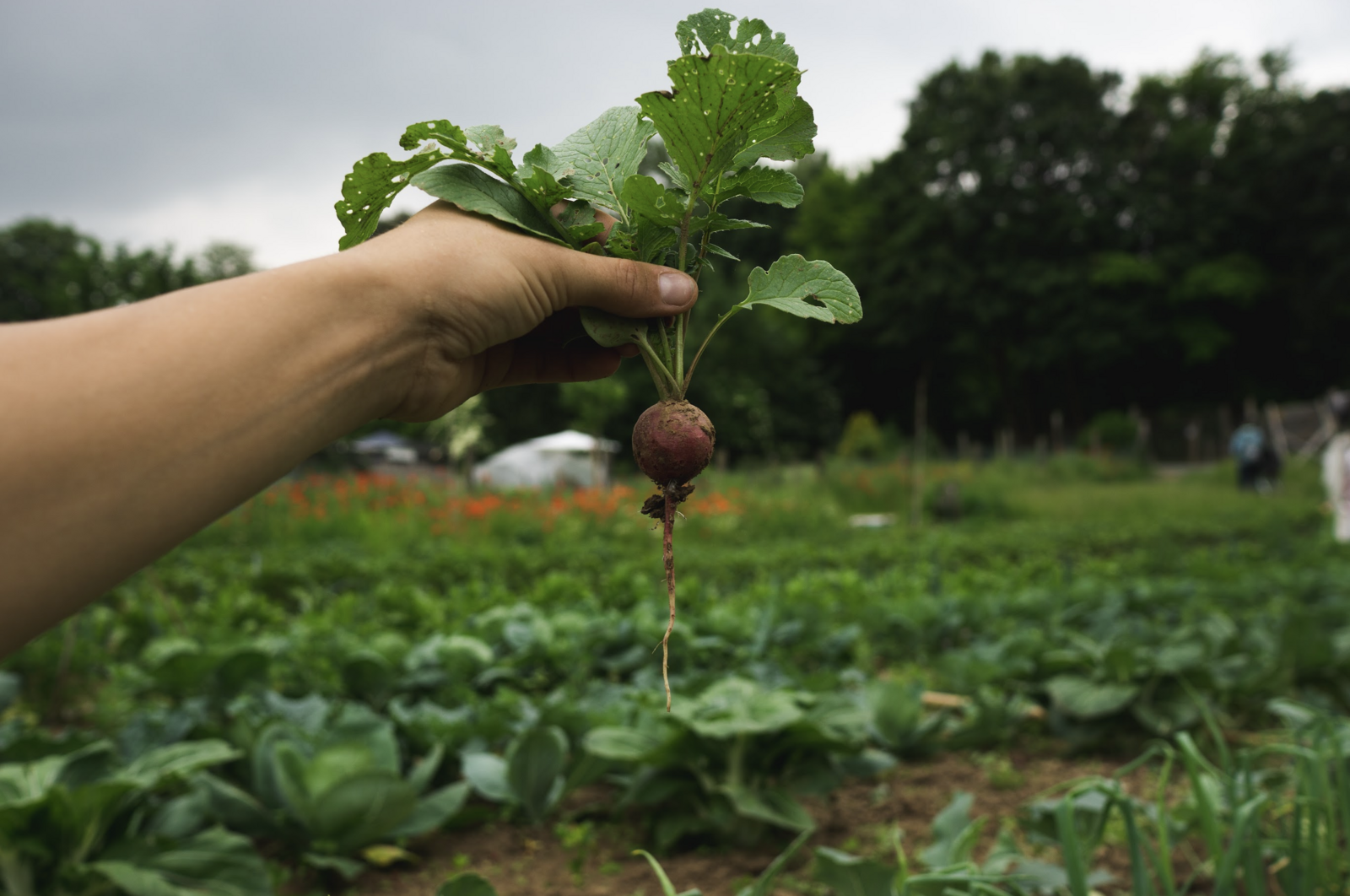
Storing Radishes
Radishes are best stored in the fridge. However, all leaves should be removed beforehand. They draw moisture from the radishes and cause them to shrivel more quickly. It is best to store the radishes in an airtight tin. Wrapped in a damp kitchen towel, radishes will also keep for a few days. If they are already a little wrinkly, you can place the radishes in a bowl of cold water for 3 - 4 hours (or put the bowl of water in the fridge). This allows them to soak up the water again and become nice and crunchy.
Our tip: You can use the radish leaves to make a delicious pesto!
Obtaining Radish Seeds: Here’s How
If you like to produce your own seeds, you can easily do this with radishes. Simply leave your radish plant in the bed and let it continue to grow. It will then start to shoot and the tuber will become woody. A large number of white to purple flowers will form. Small pods eventually grow from them. These are edible when fresh and contain valuable proteins and nutrients. If you leave them to dry on the plant, they will produce ripe seeds for sowing the following year. Alternatively, you can leave the seeds to germinate and enjoy the valuable nutrients over the winter. You can find instructions on How to Grow Radish Sprouts Yourself in our article on the subject.
I hope I've whetted your appetite for growing radishes. If you have any questions or comments, please write to us at magazin@fryd.app.
Want to get helpful gardening tips all year round and plan your own beds in the best possible way? Then register here or download the Fryd app for Android or iOS.
Fryd - Your digital bed planner
Cover picture by Michaela Wenzler on Pixabay
Marie
Current Topics in the Community

#red , #tuesday

Liked 1 times
#testpostcount

Dec 2025
Popular Articles

Companion Plants for Carrots: What (Not) to Plant With Carrots

Companion Plants for Celery : What (Not) to Plant With Celery?

Strawberry Types: List of Best Strawberry Varieties

Companion Planting With Strawberries: Companion Plants and Planting Plan

Basil Varieties & Types at a Glance

What to Plant With Cabbage: Good and Bad Companion Plants

Fertilizing Strawberries: Home Remedies & Natural Fertilizers at a Glance

Growing Sweet Potatoes: Tips on Cultivation & Companion Plants

Companion Plants for Kitchen Herbs: Chives, Parsley & Co

What Herbs Can Be Planted Together?
FAQ
You can regularly sow radishes directly outdoors from March into the fall so that you can harvest fresh radishes all year round. Pay attention to the choice of variety in summer so that they don't bolt.
How do you look after radishes properly?
At the beginning, pay particular attention to an even water supply to avoid furry or burst tubers. Radishes are weak growers and therefore do not need fertilizer.
What should you bear in mind when harvesting radishes?
Harvest the radishes as soon as they are 2 to 3 cm/0.8 to 1.2 in in diameter to prevent them from becoming furry or woody.
What is the germination temperature of radishes?
Radishes germinate at a temperature of between 6 and 15 °C/43 and 59 °F and are therefore also suitable for early sowing in the year.
What is the planting distance for radishes?
When sowing, you should leave a space of 3 to 4 cm/1.2 to 1.6 in between the seeds. Leave between 10 and 15 cm/4 and 6 in of space in the row.